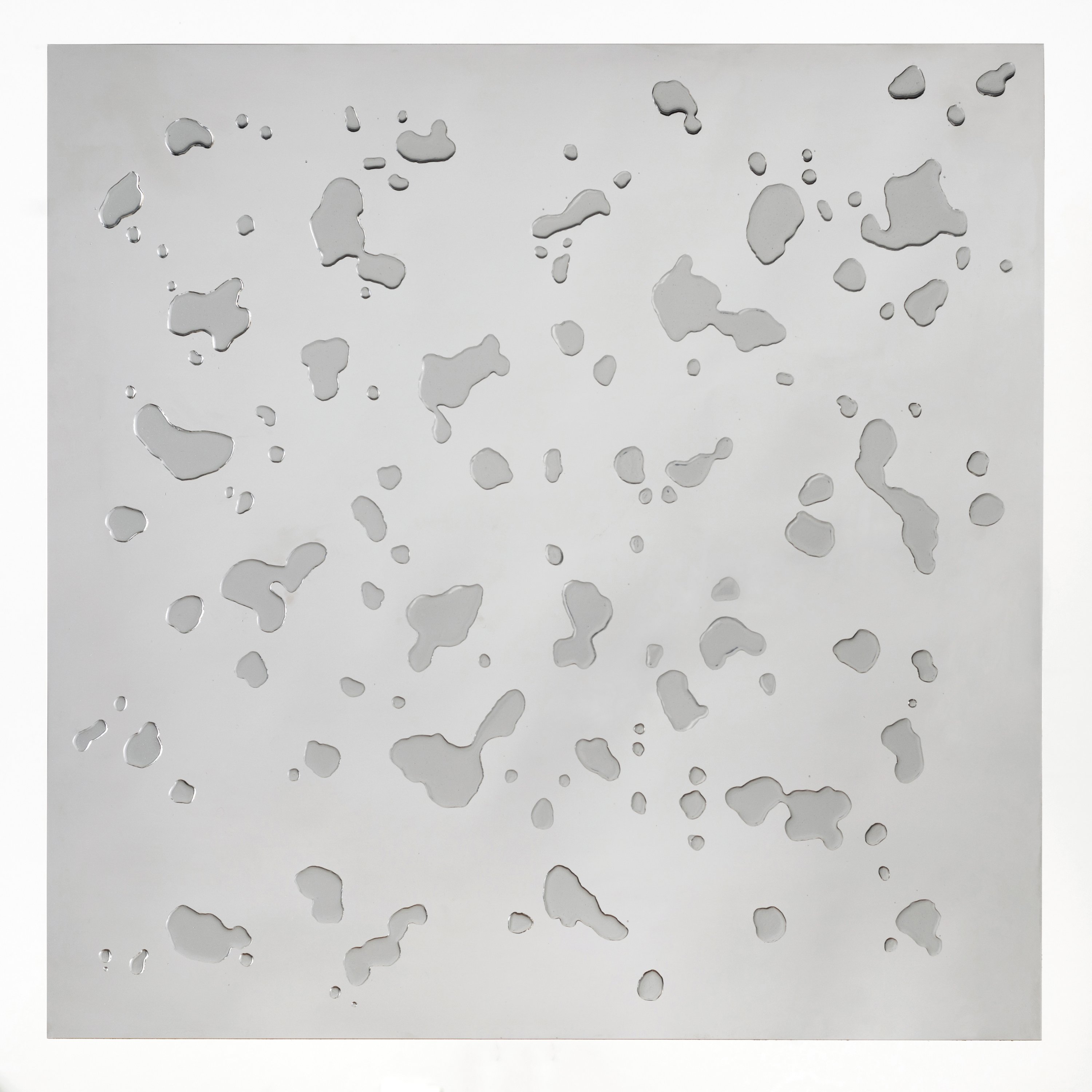Katarzyna Przezwańska
b. 1984, Warsaw
Creator of sculptures, objects, installations and architectonic interventions; painter. A painting graduate of the Academy of Fine Arts in Warsaw, she references modernism in her work, in a way never before seen in Polish art. Her works allude to the modernist heroic period, still a time of optimism, hope, and bright colours, to a modernism of human-oriented architecture adapted to meet individual user’s needs. Przezwańska’s interventions, multi-coloured spatial projects and objects are an attempt at recovering and adapting selected ideas from the past for purposes of the present. Her work of recent years has been inspired by nature and earth sciences. Winner of the ING Polish Art Foundation Award in 2018 during Warsaw Gallery Weekend. She lives and works in Warsaw.
untitled
FSP ING 0149
Katarzyna Przezwańska’s works, shown for the first time as part of the Happiness Goodness Beauty exhibition at the Dawid Radziszewski Gallery in 2015, have become a definite watershed in the artist’s career. The sculptures, installations, and architectonic interventions she formerly engaged in have retreated into the background. Przezwańska has returned to the field of painting she had studied. Using non-standard materials (polyurethane and glazing varnish and MDF panels), she revisits questions concerning forms potentially assumed by contemporary painting, and whether it makes any sense to focus on the field in times of profound social and cultural change. Her pieces are styled along the aesthetic lines of graphic software while referencing modernist tradition—in her case, of artists representing American minimalism and the Polish avant-garde of the interwar period in particular. All else notwithstanding, Przezwańska’s ultimate objective is to make her works visually attractive and aesthetically pleasing to the viewer.
untitled
FSP ING 0150
Katarzyna Przezwańska’s works, shown for the first time as part of the Happiness Goodness Beauty exhibition at the Dawid Radziszewski Gallery in 2015, have become a definite watershed in the artist’s career. The sculptures, installations, and architectonic interventions she formerly engaged in have retreated into the background. Przezwańska has returned to the field of painting she had studied. Using non-standard materials (polyurethane and glazing varnish and MDF panels), she revisits questions concerning forms potentially assumed by contemporary painting, and whether it makes any sense to focus on the field in times of profound social and cultural change. Her pieces are styled along the aesthetic lines of graphic software while referencing modernist tradition—in her case, of artists representing American minimalism and the Polish avant-garde of the interwar period in particular. All else notwithstanding, Przezwańska’s ultimate objective is to make her works visually attractive and aesthetically pleasing to the viewer.
Early Polishness
FSP ING 0169
A mere several hundred million years ago, Warsaw was overgrown by palm-like trees, much better than the one standing at Rondo de Gaulle’a (De Gaulle Roundabout): they were real. Our capital was closer to the equator; if not experiencing marine flooding, it was covered by forest inhabited by assorted creatures, including dinosaurs. In other words, the Polish capital was much better off before Poland appeared. Katarzyna Przezwańska’s mock-up offers a panoramic view of contemporary Warsaw two hundred million years ago. Subtropical climate reigns in our latitudes. Sandy wetlands are rich in coniferous trees, tree ferns, sago, gingko, Benettitales, horsetails and polypodia. A small Compsognathus is strolling among the plants, dragonflies darting overhead; the sand shows traces of other animals’ footsteps.


